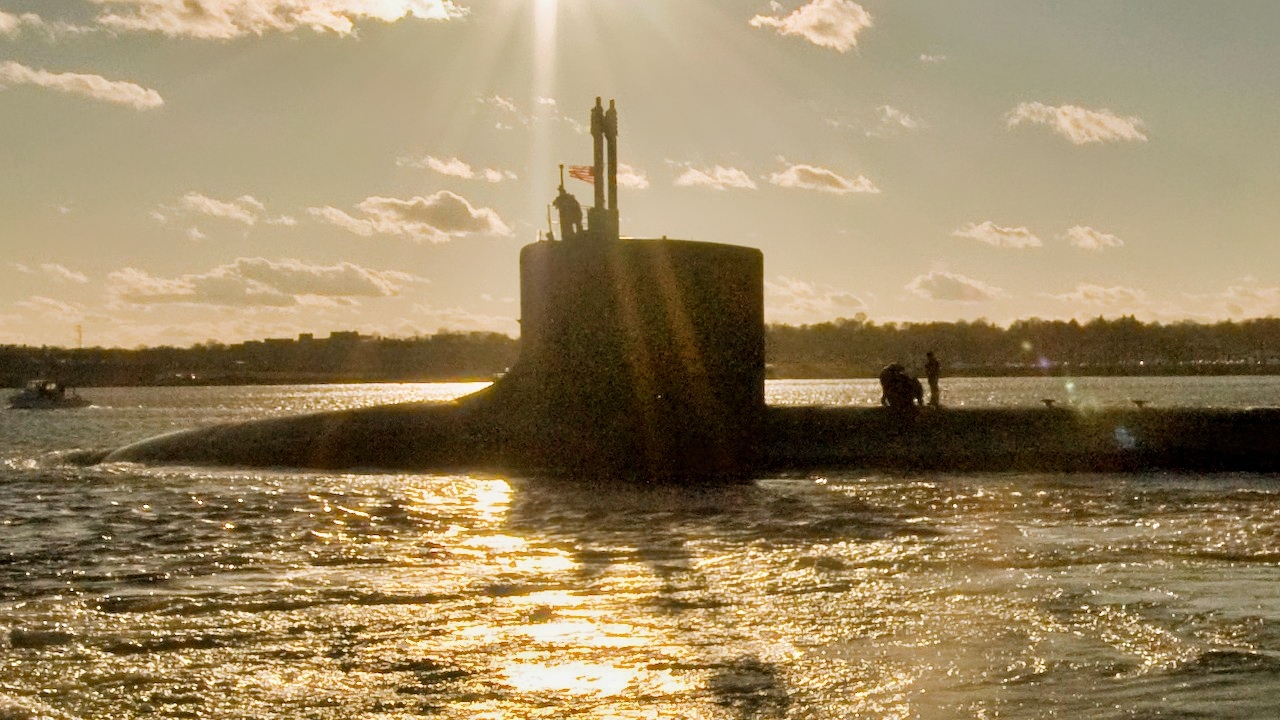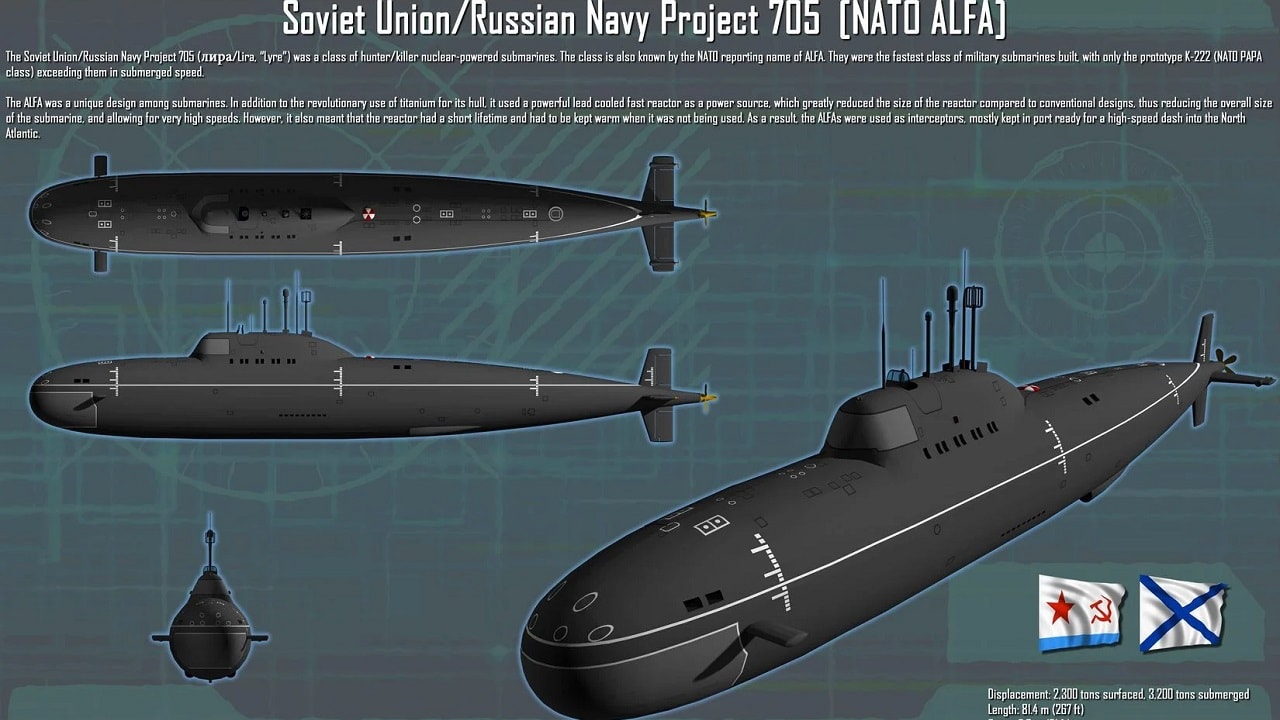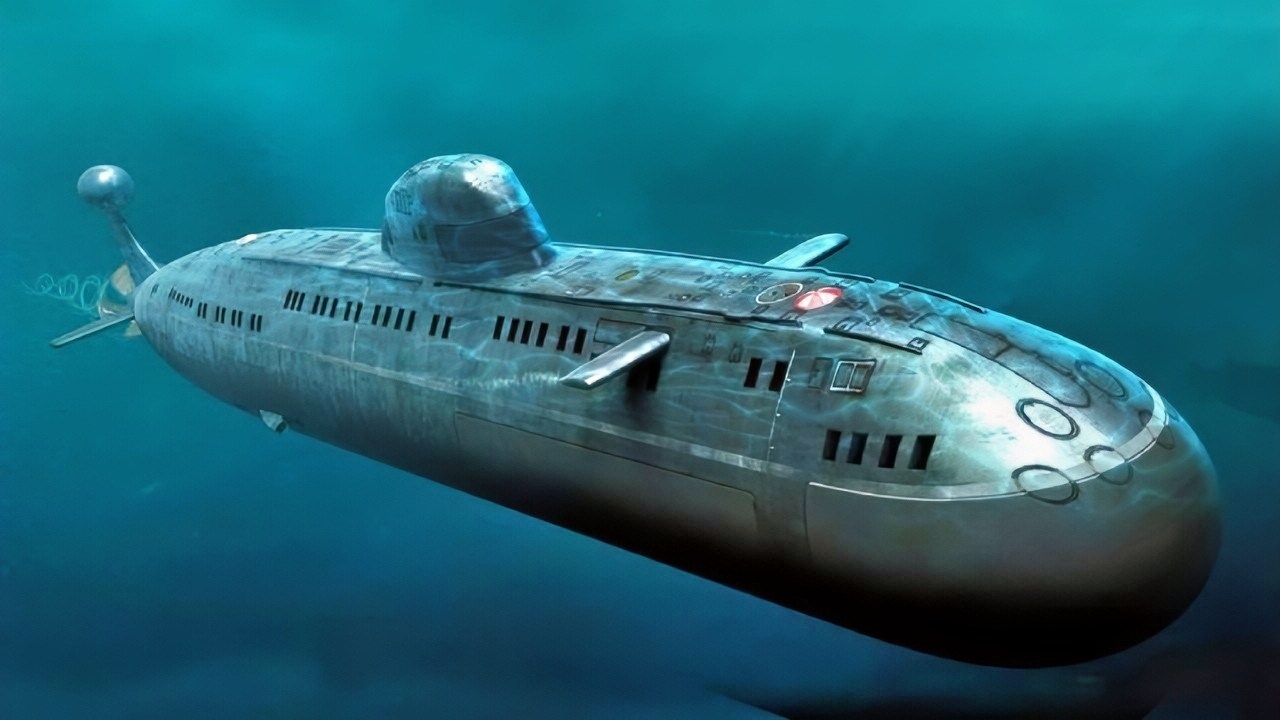Article Summary – Titanium promised the Soviets deeper-diving, faster, low-magnetic submarines like Alfa and Sierra, but it came with brutal industrial, cost, and sustainment penalties.
-Building and repairing titanium hulls demanded moonshot welding halls, specialized workers, and fragile supply chains—acceptable for a few prestige boats, not a global fleet.

Sierra II-Class Submarine. Image Credit: Creative Commons.

Sierra-Class-Submarine. Image Credit: Creative Commons.
-The U.S. Navy instead doubled down on high-grade steel, extreme quieting, better sensors, and reliable weapons, betting that the submarine you never hear beats the one that dives 200 feet deeper.
-In practice, acoustic stealth, readiness, and lifecycle economics proved more decisive than exotic metals in the undersea contest.
Why the U.S. Navy Said No to Titanium Submarines
Walk around a U.S. fast-attack boat—Los Angeles, Seawolf, Virginia—and you’re looking at a cathedral of steel.
Across the pier in a Cold War “what-if,” you might picture a silvery hull of titanium: deeper, faster, almost non-magnetic. The Soviets built boats like that. We didn’t. That wasn’t ignorance or timidity; it was a conscious choice about what actually wins under the sea.

The Virginia-class attack submarine USS Virginia departs for a six-week underway. During this deployment, Virginia will undergo an Operational Reactor Safeguard Examination and a Tactical Readiness Evaluation to assess the submarine’s reactor along with its capacity to combat casualties through damage control.
In fact, as a former engineer who worked on nearly every nuclear submarine project from Nautilus to the Seawolf-class told me: “We just decided titanium hulls weren’t worth the trouble.”
Let’s unpack why the U.S. Navy made that call.
The Titanium Promise: Deep, Fast, Non-Magnetic
Titanium’s headline virtues are obvious to any engineer. It has a superb strength-to-weight ratio, it laughs at seawater corrosion, and it barely budges a magnetic-anomaly detector. Those traits translate into operational seduction: go deeper for survivability, go faster for tactics, and shrug off rust and deperming cycles.

Alfa-Class Submarine Creative Commons Image.

Alfa-Class Submarine. Image Credit: Creative Commons.
The Soviets—and later Russia—pursued that promise in a handful of spectacular classes: the record-setter one-off “Mike,” the knife-quick “Alfa,” and the “Sierra” hunters. These weren’t paper studies. They were real boats that forced Western planners to respect raw performance.
The Hidden Bill: Metallurgy, Factories, And Fleet Life
Titanium doesn’t just cost more per pound; it demands a different civilization to shape it at submarine scale.
Welding And Hull Rings. High-quality titanium welds need meticulously clean, oxygen-free environments. The Soviets built enormous electron-beam welding chambers to seam pressure-hull rings, with tightly controlled atmospheres to avoid embrittlement. That’s a moon-factory, not a tweak to a normal yard.
Specialized Workforce And Tooling. From cutting and forming to post-weld heat treatment and inspection, everything changes: fixtures, NDI techniques, acceptance criteria, even how you store and handle plate to prevent contamination.
Repair Reality. Battle damage or a crack in a steel hull can be addressed at a naval shipyard with established procedures. Field-repairing titanium demands inert gas purges, specialized weld heads, and time. In a global Navy that lives at sea, that’s a readiness tax you pay forever.
Supply Chains. Titanium sponge production and mill products have always been cyclical, energy-intensive, and dominated by a small vendor base. Tying the backbone of your undersea fleet to that market is a strategic risk, not just a budget line.
The Soviets accepted those costs for a few elite boats. The U.S. Navy asked a different question: what buys the most war-fighting advantage per dollar and per sailor across an entire force?
America’s Bet: Quiet Beats Depth
By the late Cold War, U.S. undersea strategy hardened around a simple truth: the quieter submarine wins. If the other guy never detects you—or detects you too late—your actual test depth matters far less. The United States invested where quiet lives:
Ultra-Steels And Hull Quality. High-yield steels (HY-80, HY-100 and beyond) gave plenty of depth margin without ripping up the industrial base. U.S. yards already knew how to cut, roll, weld, and inspect these alloys to exquisite standards.
Acoustic Engineering. Rafted machinery, precision shafting, skewed propellers and then pump-jets, anechoic coatings, careful fluid and structural isolation—decades of noise discipline turned steel hulls into acoustic black holes.
Sensors And Combat Systems. Bigger, smarter sonars, quieter cooling flows, and processing that squeezes whispers from ocean noise. Detect first, classify first, fire first.
Weapons And Tactics. If you own the first detection and have reliable torpedoes and standoff missiles, you don’t need to sprint at 40-plus knots or dive half a mile to win.
Depth is impressive in a brochure. Silence wins patrols.
The Soviet Logic: Different Oceans, Different Pressures
Why did Moscow say “yes”? Three intertwined reasons:
Performance As Offset. Soviet boats often trailed in quieting. Titanium (paired with high-power reactors and novel coolants) offered a different advantage: outrun, out-dive, out-climb.
State-Directed Industry. A command economy could concentrate resources on exotic welding halls and titanium mills adjacent to submarine yards. You don’t have to make a business case in a normal sense when the Politburo is your program manager.
Magnetic Signature And Arctic Games. A low-magnetic hull is handy near NATO’s sensor webs and in the Arctic. It doesn’t make you silent, but it complicates one avenue of detection and allows higher-latitude freedom.
Those bets produced astonishing hardware—and bruising lifecycle headaches. Lead-bismuth reactors ran hot; maintenance margins were thin; costs were cliff-steep; and even titanium boats struggled to rival the acoustic discretion of their American counterparts.
“But Isn’t Titanium Quieter?” Not By Itself
Titanium doesn’t hum; machinery does. Hull material matters primarily through stiffness, damping, and how it transmits or reflects vibration. Titanium’s lower modulus can change how a hull “rings,” but the dominant noise contributors are pumps, gears, coolant flows, and how all that energy moves into the ocean. You can build a noisy titanium boat and a whisper-quiet steel boat; the latter is the one the other side never hears.
The U.S. Navy’s Sustainment Math
A submarine isn’t a one-off prototype; it’s a 30- to 40-year creature with refuelings, depot periods, emergency repairs, and upgrades. With steel, the Navy could:
Fix battle damage and age-related issues in any major yard.
Train and retain a stable, large workforce versed in familiar processes.
Compete suppliers and keep costs and schedules more predictable.
Insert new tech—sonars, masts, coatings, combat systems—without rebuilding the pressure-hull playbook every time.
Those very boring advantages let the U.S. run a global, high-tempo attack-sub fleet that shows up, year after year, wherever national tasking points.
The Cost Curve Never Bent Enough
Could the U.S. have afforded a small titanium cadre? Maybe—as a stunt. But the opportunity cost would have been staggering: fewer hulls, stretched maintenance, and precious dollars diverted from quieting and weapons to metallurgy and weld chambers. Meanwhile, American steel boats kept getting quieter and more lethal. “Good enough” depth plus “world-class” silence beat “spectacular” depth with “good-enough” silence, at scale, for decades.

Virginia-Class Submarine. Image Credit: Creative Commons.
Two Philosophies, Two Outcomes
Soviet/Russian Titanium: Dazzling peak performance on a few platforms, dramatic test-depth and speed figures, lower magnetic signature—and a support tail that groaned under the weight of exotic materials and hot reactors.
U.S. High-Grade Steel: Excellent (if less headline-grabbing) depth, relentless quieting, superb sensors, and fleetwide maintainability that kept more boats on station more of the time.
In a knife fight you never saw coming, the quiet knife wins.
Would Titanium Ever Make Sense For America?
Pieces of it already do. The Navy uses titanium inside submarines where corrosion resistance, strength, and weight pay off—valves, heat exchangers, periscope structures, and specialty piping. If additive manufacturing, cheaper sponge production, or new alloys ever slash cost and tame welding, a hybrid approach (critical rings or inserts) could re-enter the conversation. But a full titanium pressure hull? That would require not just a material breakthrough, but an industrial one—and a compelling operational payoff beyond what U.S. boats already achieve with steel.
The Bottom Line
The Soviets reached for titanium because it offered a path to raw, measurable performance where they could out-excel, and because their system could absorb the pain. The U.S. Navy chose quiet, sensors, and sustainment—the things that deliver kills and deter wars across an entire force, not just in a few spectacular prototypes. Both strategies made sense in their own worlds. Only one proved decisive in the cat-and-mouse that actually mattered.
About the Author: Harry J. Kazianis
Harry J. Kazianis (@Grecianformula) is Editor-In-Chief and President of National Security Journal. He was the former Senior Director of National Security Affairs at the Center for the National Interest (CFTNI), a foreign policy think tank founded by Richard Nixon based in Washington, DC. Harry has over a decade of experience in think tanks and national security publishing. His ideas have been published in the NY Times, The Washington Post, The Wall Street Journal, CNN, and many other outlets worldwide. He has held positions at CSIS, the Heritage Foundation, the University of Nottingham, and several other institutions related to national security research and studies. He is the former Executive Editor of the National Interest and the Diplomat. He holds a Master’s degree focusing on international affairs from Harvard University.
More Military
The YF-23 Black Widow II Stealth Fighter Almost Made the Ultimate Comeback
The New Leopard 2A8 Tank Has a Message for the Russian Army
The F-22J Raptor Stealth Fighter Will Never Fly For Japan (China Is Smiling)











Schrodingers Dog
October 6, 2025 at 10:06 am
Most of the titanium metal is from China, Japan, and Russia. Not good to be dependent on an enemy for a material used in warships (Japan is not an enemy).
Boogie
October 6, 2025 at 10:30 am
The Soviet Union was the world leader in titanium production. The US has always produced very little. Almost all of the titanium used in the SR71 program came from the USSR. They controlled the price. It was just too expensive and not worth any advantages its use would bring.
Andrew J Walker
October 6, 2025 at 1:07 pm
The boat you don’t want to be on is the one that the first you know of a enemy submarine being close by is one massive bang, the lights going out, and a lot of water where it’s not meant to be.
It doesn’t matter if the hull is titanium or steel, you want to be on the one that still got its lights on. And the water in the right place i.e. outside of the pressure hull.
Steel boats are better overall.
John C
October 6, 2025 at 6:27 pm
Titanium boats are the ones I would be on because they take shock and pressure better then HY 80 steel boats. Cost of life is more than the negative consequences.
Joseph K
October 7, 2025 at 1:17 am
This sounds like sourgrapes. DF yanks can’t afford it so they criticize it. It’s like those poor DF MAGAs who say Lamborghinis are too ugly and they’re too slow because they live out of a cardboard box.
Haider Ali
October 7, 2025 at 9:10 am
No mention of shock absorption. My recommendation for a HuK submarine is super fast titanium hull with all the goodies mentioned for US submarines.